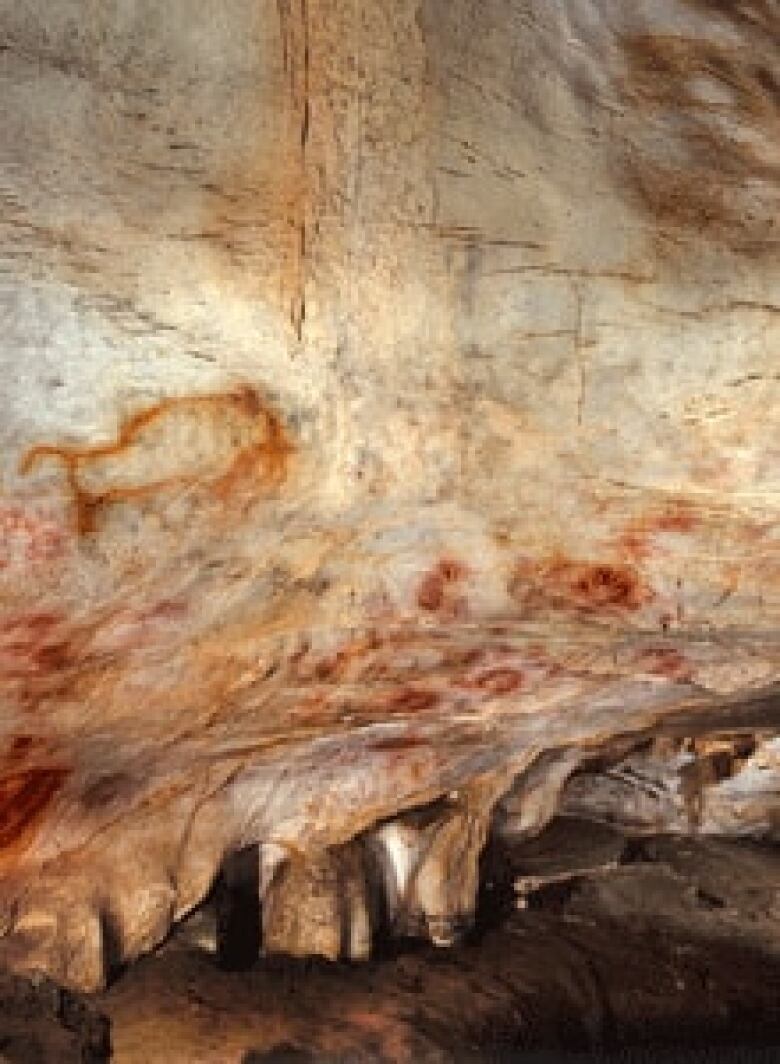Oldest cave-man art in Europe dates back 40,800 years
Neanderthals may have painted works in Spain, scientists say

A team of scientists studying cave paintings in Northern Spain has verified they are the oldest known works of Stone Age art in Europe, finished some 10,000 years earlier than the prehistoric wall paintings found in France.
Alistair Pike, an archaeologist with the University of Bristol and lead author of the study, said the 50 paintings observed in 11 caves in Spain included wall art from the UNESCO World Heritage sites Altamira, El Castillo and Tito Bustillo.

Through a process called uranium series dating, Pike explained, the researchers were able to calculate that the paintings date back to at least 40,800 years ago.
"With the El Castillo cave, there's a panel that's made up of negative hand stencils, where you put your hand up against the wall and either blow or spit pigment at it, creating the stencil," he said. "Next to this was a red disc, which was made with the same technique."
While the hand print was found to be older than 37,300 years, the red discs date back to 40,800 years ago, indicating other artists revisited the cave to add to the composition.
Pike said that the scientists decided to employ uranium series dating techniques "because we suspected that radiocarbon chronology was not giving the full picture of the chronology of cave art."
Measured thorium to uranium ratio
Radiocarbon chronology relies on the presence of organic binders or pigments such as with charcoal drawings. Previously, the oldest cave paintings were thought to be 37,000-year-old images in France's Chauvet cave. In Spain, no carbon-dated Stone Age paintings were found to be older than 25,000 years.
"But we knew that a lot of cave art was made with engravings or with red ochre, which was just ground up with a bit of water and put on the wall," he said.
'If this really is Neanderthal art in El Castillo cave, which is open to the public, your eye can go along and we can see the hands of the Neanderthals' —Alistair Pike, University of Bristol
As for the Paleolithic wall art Pike and his colleagues studied, there was nothing to carbon date in the pigments.
Uranium series dating works differently, measuring the ratio of thorium to uranium, and there is a lower risk of contaminating samples.
In the case of the El Castillo cave art, scientists observed the formation of thin calcium carbonate composites derived from water that dripped through the ceiling and ran down the wall. The water and minerals formed a hard layer and deposited trace amounts of uranium, which over time decays into the radioactive element thorium.
"By measuring the ratio of thorium to uranium, we can work out how long since this calcium carbonate precipitated," Pike said.
The timeline for the El Castillo cave paintings falls in a cusp where the works could have either been created by modern humans or Neanderthals, Pike said, noting that evidence for modern humans in Northern Spain dates back to 41,500 years ago.
Competitive environment
"It’s unfortunate that the date came out as it was, because if it was 1,000 years older, we’d be very happy to say it was definitely made by a Neanderthal, but because it's right at that period — because that calcite crust formed right as modern humans arrived from Europe 40,000 years ago — we have to offer two interpretations," he said.

One theory is that humans developed the tradition of painting caves before they arrived in Europe, and just imported the tradition — an idea Pike said is unlikely, given that there's no evidence of any similar kind of wall painting elsewhere in Europe.
"The other possibility is that humans started painting very shortly after they arrived in Europe, and the question is to say 'Why did they do that?'" he said.
"Slowly and gradually, they developed these new cultural expressions of symbolic behaviour."
Pike said it's possible that shortly after humans arrived to Europe from Africa, they found the need for cultural evolution and communication through art to ensure survival in an environment that became competitive with Neanderthals.
The prospect that the paintings may have been done by Neanderthals is also exciting, as the caves — which were discovered in the late 19th century — are now open to the public and several are UNESCO World Heritage Sites.
"If this really is Neanderthal art in El Castillo cave, which is open to the public, your eye can go along and we can see the hands of the Neanderthals," Pike said.
"This has opened enough questions that we’ll be going back to do more dating. There are literally thousands of pieces of art out there that we can date."
The report by Pike and his colleauges on the wall art findings can be read in the latest issue of the journal Science.

